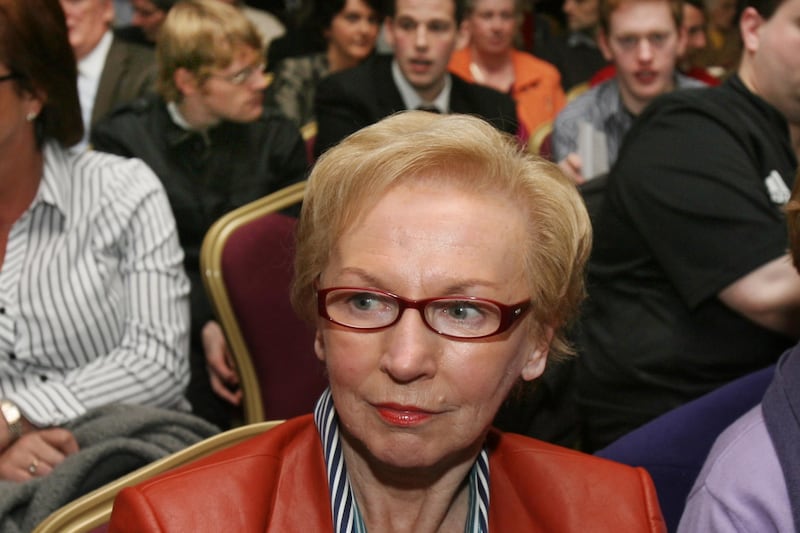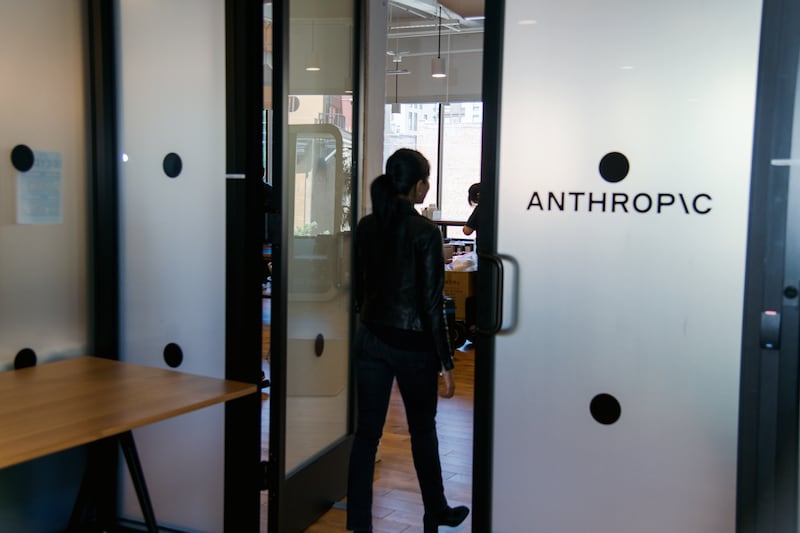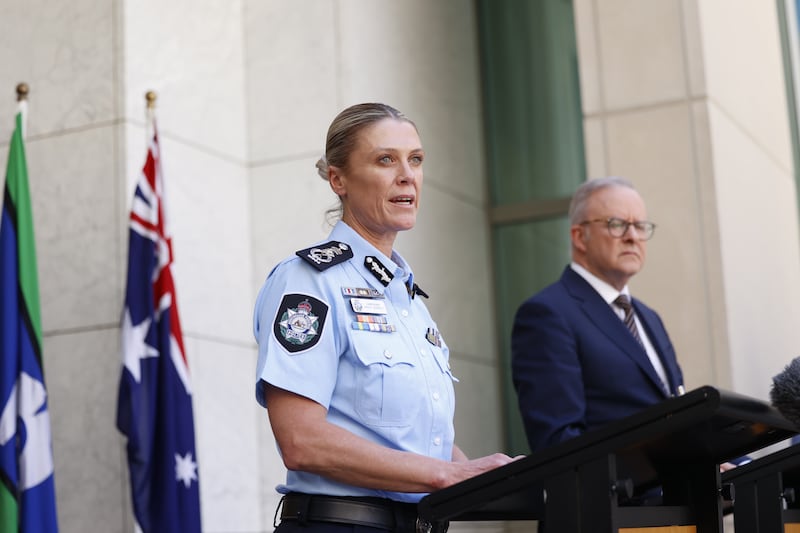“I was 20 the first time I drove the hearse,” Marian Healy Prendergast says matter-of-factly. We are sitting in her home in Glin, Co Limerick. Prendergast, one of Ireland’s relatively few female undertakers, is reminiscing about growing up in a family where the business was tending to the dead and the distraught people they leave behind.
“We grew up with the business,” she says. “I would remember as a child being cleared out of the sitting room when someone came in with bad news, and my mother making tea. I would give credit to the women of yesteryear; the wives of undertakers, meeting the people. The culture was different; there were no phones. People came to the door, and my father might be out, so my mother would entertain them until they came back.”
Prendergast’s grandfather, Tom Healy, started their business in 1893, which was part of a carpentry workshop. His sons continued it, with Joe, Marian’s father, eventually taking over in the 1950s.
“We would get small jobs when we came home from school, like you would in any family business. I’d have to line coffins with material. I’d keep some of the left-over lace and fabric for my dolls. I can remember my father making boxes in the workshops; small boxes for amputated limbs. I never questioned the small boxes, because I was so enraptured of availing of the lace trim that was left over.”
READ MORE
Once electricity arrived, society wanted better presentation of the remains. That’s when embalming and sanitisation of the remains came in
It was, says Healy Prendergast, the tradition at that time to bury amputated limbs. “A baby or a limb to be buried was buried either very early in the morning or late in the evening. My own grandmother’s two legs were amputated. They went down into the grave first, before her,” she says. When her grandmother later died, she was buried in the same grave as her amputated limbs, as was the practice.
Formerly, coffins were made locally, usually by the undertaker. In the days before electricity, her relatives held candles for those making coffins. It was considered bad luck to make a coffin in advance of a death, so her father would make the sides and other parts, and then assemble them when a death occurred.
“We buy our coffins in now.” She keeps some dozen or so on site at a time. Later, I see one under a bedspread in an adjacent building.
Embalming was not always part of an Irish funeral. Pre-electricity, as Healy Prendergast says, houses were far more dimly lit. Any decomposition of the body being waked was not as visible. “But it was definitely there. There would be fires lit, and lots of people in the room. Once electricity arrives, society wanted better presentation of the remains. That’s when embalming and sanitisation of the remains came in.”
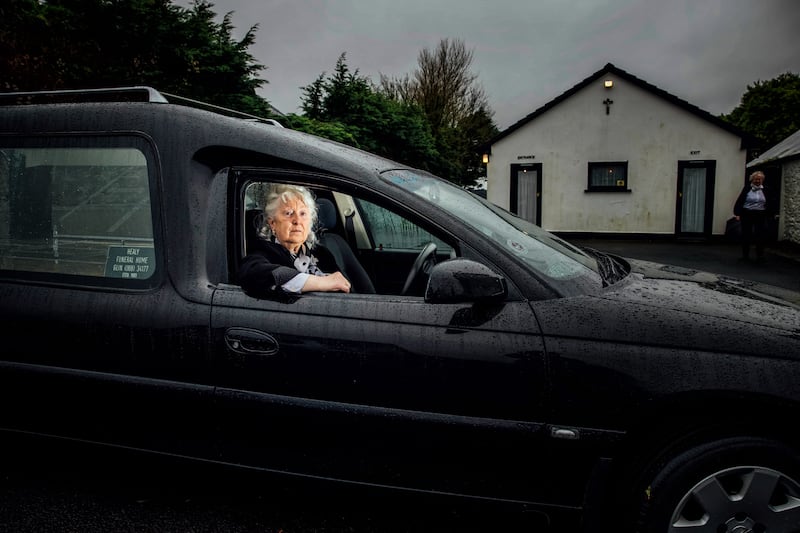
Joe also made pony traps, and his brother upholstered them. Funerals were not enough in themselves to support a family. Healy was also a signwriter, a painter and decorator. There is a framed letterhead of a blank invoice on the wall in Prendergast’s family home. “If I supply you with funeral requisites or any other work on credit, I do you a good turn. If you do not pay your account monthly you do me a bad turn,” it reads. Then as now, it appears, some payment for funerals can be less than timely.
Back when her father was working in the business first, coffins would be transported on a farmer’s cart and pulled by a horse or two. These were the wishes for the funeral of Desmond FitzGerald, the knight of Glin, who died in 2011: his remains were transported in a red cart by a black horse. Healy Prendergast conducted his funeral.
“The big breakthrough with the funeral was the motor hearse, which my father brought to Glin in the 1950s.”
Joe decided to sell on this hearse a few years after buying it. But first he had to reconfigure it. Nobody wanted to buy a second-hand hearse for their personal use. So he cut off a section of the long back part, including the vehicle’s distinctive glass panels with their solemn etched scrolls.
Those same panels from that hearse are still on display today: they form the glass panels in the two doors that lead in and out of the funeral home on Mill Street, and the window in between them. The building, now more than 60 years old, was established by Joe as another first for the area.
I outsource my embalming. There are more women coming into that area too. I think Marie Cassidy broke the mould and was responsible in encouraging women into the field of undertaking
It was never an automatic decision for Healy Prendergast to take over from her father. “I drifted into it when my father was still involved in the business,” she says.
When Joe died in 1999, she decided to continue the business. “Undertaking was always male dominated because there was such a physical side to it. Nowadays, we have technology to help with that, like the introduction of the coffin hoist. I outsource my embalming. There are more women coming into that area too. I think [former state pathologist] Marie Cassidy encouraged women to get involved in the area of forensics. She broke the mould and was responsible in encouraging women into the field of undertaking.”
Undertaking had changed hugely since her grandfather started the business. Those changes have kept evolving. “Putting notices on local radio. RIP.ie. People now want printouts from the RIP.ie notices, for instance.” Undertaking also has unique demands on the people who practise it, due to the nature of the job. If you look at the website of most undertakers, they declare they are available 24-7. Her phone rings frequently while I am with her.
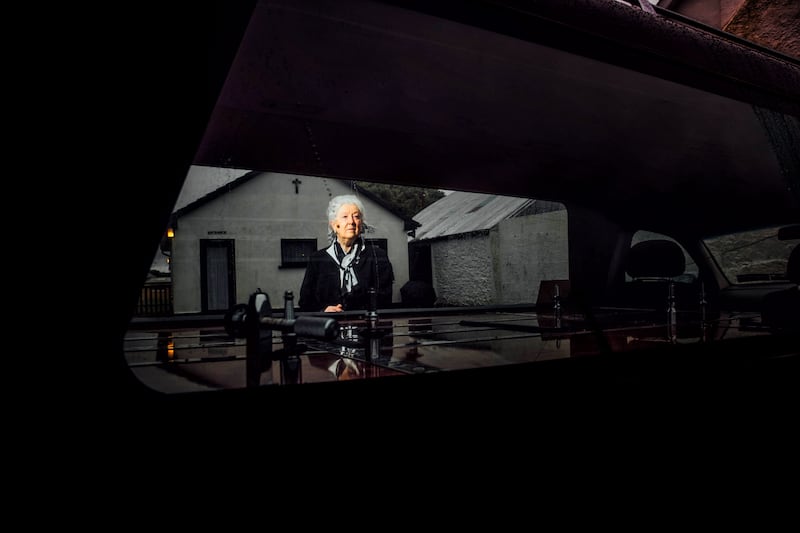
As it happens, bigger changes in undertaking occurred during Healy Prendergast’s time than in either of her father or grandfather’s stewardship of the business.
“Covid changed everything,” she says. She is still upset that the Government chose not to classify undertakers as frontline workers. It was not just that at the height of lockdown, only 10 people were permitted at funerals: the drastic changes to the way funerals and burials were conducted have had lasting consequences.
“Due to the restrictions at the funeral home and the numbers going to a funeral, the reposing of the remains went back to the house again. The wake at home has come back again. Sometimes it might be restricted to relatives, with a formal reposing then being at the funeral home. For the undertaker, after the funeral home, we take back the remains to the house again, and then take it again from the house to the church. That is extra work. The remains are brought to the house twice, not once.”
It used to be common for a wake to take place at home, then the remains taken to the church for an evening removal with prayers, and the funeral the following morning.
“But the church – as we know – now has a shortage of priests,” she says. “There is no parish priest in Glin since the last one retired a few years ago. He was not replaced. And that is happening in every second parish around the country.” There are now a number of parishes in the region that are now collectively served by just two priests.
“So the laity are now getting involved,” she says. “There’s a committee formed for it, like the people who give out Communion. Some of the family have even led prayers. You will get an older age group of people coming to a funeral and they will have a problem with the laity being involved, so you have to work around it.”
You might have a division in the family, and it comes out in different ways, such as one lot of family wanting one kind of coffin and the others not
As she sees it, in the future, there will be three or four coffins in a church at a time, as the number of priests dwindle still further. “I think the smaller churches will close because of the lack of parish priests, and nobody to replace them. The rural undertaker will have a big question mark over them; will they survive? Will they still exist in a few years? Will all funerals go through the big towns?”
What are the essential qualities of an undertaker?
“I would emphasise how very important it is to have empathy. And you have to have commitment to being there for them. Answer their questions as best you can. Be patient. You have to explain things like the fact you can’t get a death certificate straight away if there is a postmortem going to take place. That’s hard when you have someone very vulnerable and upset whom you are dealing with.
“You have to pay very close attention to the death notice they write: if someone is left out of it by mistake, you could start world war three. You need a skill set to read the tensions or signals within a family. You might have a division in the family, and it comes out in different ways, such as one lot of family wanting one kind of coffin and the others not.”
She is appalled by the number of people – usually younger relatives of the deceased – who remain stuck to their phones while she is having a conversation with their bereaved older relatives. “The mobile phone going off all the time; I don’t understand it. There is a time and a place.”
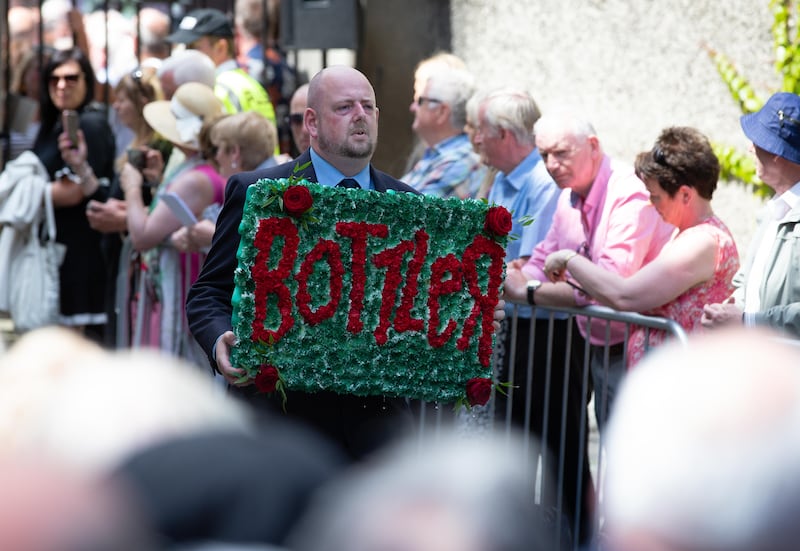
What she describes as “the traditional simple funeral Mass” – no gifts, no music, burial and going straight home – is now rare. “Now there is a demand for all sorts of extra services. People want music. The laity get involved in bringing up gifts. You are telling a story through the gifts, and there has to be laughter and grief.” She cites a regular funeral gift in her rural parish as “a sod of turf from the bog”. It symbolises the fire, the heart of home, the place of storytelling.
She says it is tradition that “a layman’s coffin is always facing the altar; the feet are towards the altar. But the clergy face their congregation. And the only other person I saw where the feet were towards the congregation was at Brendan Grace’s funeral. I saw it on television. I wondered was that deliberate, or to do with cameras. Most people wouldn’t have noticed, but I did.”
Cremation is on the rise. Of the 20 or so funerals she organises a year, a good half of them now involve cremation. When people are cremated overseas, the ashes can be brought back in hand luggage, but must be accompanied. Coffins, she says, come in as cargo and freight. They have to be screened and checked, including by sniffer dogs, before being released. The undertaker is the one who receives the coffin at the transport hub.
She saw her first dead body at the age of four; a neighbour laid out on a bed at their home. It wasn’t until she was older that she actually touched a dead body, and realised with a shock that it was cold. “I have seen too many dead bodies since,” she says. ‘But it doesn’t bother me.”
How has her job impacted on her own thoughts on mortality?
“I try to have faith,” she says. “I question my faith when I see a three-month-old dead baby going for a postmortem, and the parents distraught in a hospital corridor. You wonder why some people have so much tragedy visited to their lives. But as well as faith, a sense of humour is very important. If I didn’t have a sense of humour, as someone who deals with death, I would go totally nuts.”
- See our new project Common Ground, Evolving Islands: Ireland & Britain
- Sign up for push alerts and have the best news, analysis and comment delivered directly to your phone
- Find The Irish Times on WhatsApp and stay up to date
- Our In The News podcast is now published daily – Find the latest episode here













